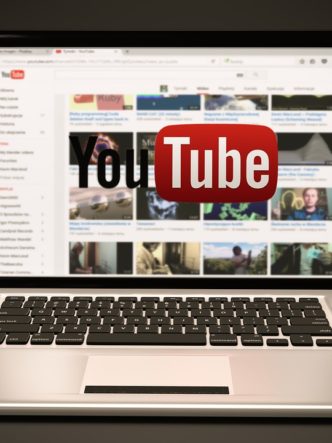Want better conversions? Add a Video Paywall. Here’s everything you need to know.
Video is an excellent way to reel in new customers and make a bit of extra money. Numerous brands today use video as a way to promote their message, show off their products, and engage with customers in a fun, dynamic way. But, all too often, they offer access to this valuable video content for free.
Why shouldn’t they give this content away? After all, the whole point of it is to build brand/customer relationships and drive conversions, right? Surely, you can’t do that if you hide the content behind a paywall.
Or can you?
Well, it depends on what you’re paywalling and how you use that paywall. While you won’t get far making people pay to watch your adverts, more valuable content can actually benefit from being behind a video paywall.
As well as providing you with a reliable source of revenue, it gives viewers a better experience, helping to build a loyal brand community and, crucially, allowing you to capture vital customer data. The kind of data that will send your conversion rate through the roof.
How? Keep reading our guide to find out.
What is a video paywall?
A video paywall is a digital block that prevents people from accessing exclusive content for free. To get over the paywall and watch the videos behind it, the customer has to make a payment. This can be a one-off payment or a subscription.
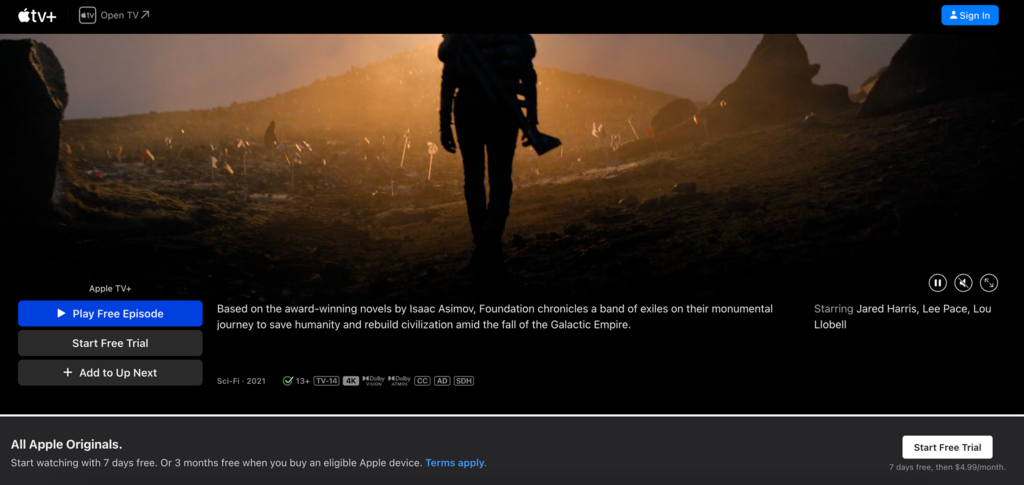
Screenshot sourced from mediamakersmeet.com
There are three main types of paywall:
- Hard paywall: Hide your entire library of video content to restrict any free access to content.
- Soft paywall: Offer sample content (such as a free trial), but require the viewer to pay or subscribe to access the full offering.
- Freemium paywall: Provide a tiered subscription model that offers viewers a certain amount of content for free for an unlimited time. To gain access to premium content/features, the customer must upgrade their subscription. This can enhance your brand reach by attracting a larger audience with free content, encouraging them to upgrade for more exclusive features.
What are the main video paywall models?
If you want to implement paywall solutions, it’s important to understand which model suits your business and viewers.
Subscription Video-On-Demand (SVOD)
As the name suggests, SVOD works on a subscription basis. Subscribers pay a recurring fee and in return are able to access your video library. This model works best if you’re using an app with a strong API integration platform as users will expect their subscription data and new content to sync effortlessly. They shouldn’t need to re-enter their details every time they want to watch a video.
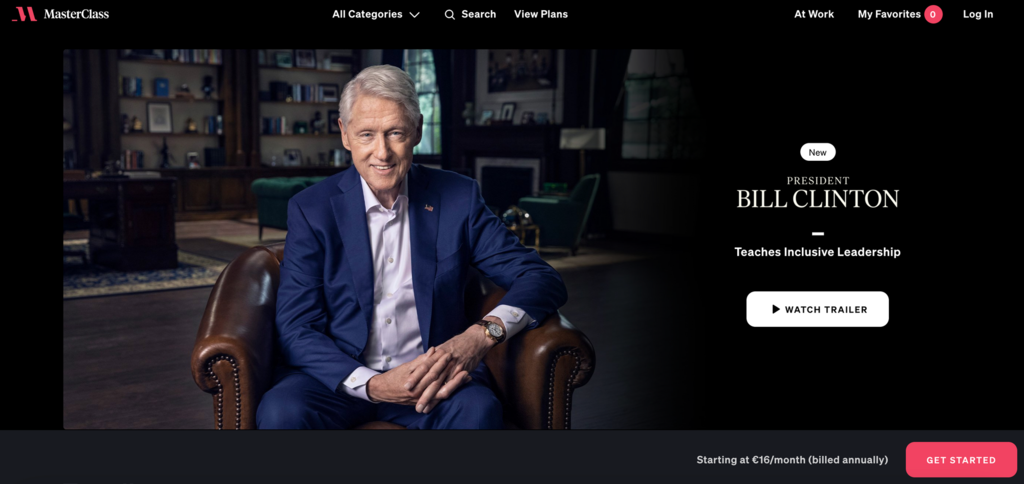
Screenshot sourced from mediamakersmeet.com
Transactional Video-On-Demand (TVOD)
TVOD works on a pay-per-view basis. Typically, a viewer will purchase an individual video, either on a permanent or rental basis. There is usually no obligation to subscribe to a brand or channel’s content for this, but some companies do take the opportunity to collect data at checkout.
Pay-per-view providers, who offer individual videos for purchase or rent, operate under this TVOD model. They play a significant role in the market by catering to consumers looking for specific content without a subscription commitment.
Hybrid
A hybrid paywall approach combines elements of both transactional and subscription models. Amazon Prime Video is a good example of this. Viewers can access online content like TV shows and movies for a monthly subscription. But other video offerings like sports matches require an additional payment.
Additionally, platforms utilizing hybrid models can also sell digital products directly, such as exclusive digital downloads or virtual goods, further diversifying their revenue streams.
Why should I put my videos behind a paywall?
Some brands are wary of putting videos behind paywalls, which is understandable. After all, this barrier makes your content harder to access and adds a point of friction in your content-viewing process.
However, offering premium video content behind a paywall can bring huge advantages for companies, content creators, and audiences alike.
They create a sense of FOMO
Content that’s hidden behind a paywall is like that elusive underground club that requires a password to get into. Adding a barrier automatically creates a sense of exclusivity and a perceived sense of value. Doing this generates a fear of missing out (FOMO), which is a brilliant tactic for driving conversions.
Customers that don’t want to miss out on content are more likely to become paying subscribers. They’ll want to join the club so they can gain unlimited access to your videos.
They help build a community
There’s a shared sense of belonging when people join an exclusive club – in this case, your paywall platform. Building up a community of paying subscribers gives you a chance to better connect with viewers and encourage fellow subscribers to interact with each other as well.
Online communities go hand-in-hand with brand loyalty, and loyal customers are far more likely to recommend your video platform to others and stick with your company in the long-run.
Utilizing the valuable data gathered from your video paywall can inform broader marketing strategies. For example, understanding your digital audience’s preferences and behaviors can help you forge effective retail partnerships or develop targeted digital marketing campaigns.
They’re great for data gathering
To get past your paywall and enjoy your digital content, viewers have to enter payment details.
This information isn’t the data you want – in fact, it’s often better if you let a secure third party like Google or Apple Pay take care of the money side of things. That said, this is an opportunity to gather other valuable data, such as demographics and email addresses.
This kind of data has a lot of value. It gives you vital information into who your customers are and what they want. You can use this data to:
- Create targeted marketing campaigns
- Create ads that resonate with your audience
- Boost customer/brand relationships
- Improve customer services
- Get a greater understanding of your market
- Hone your personalization strategy
- Bring in customers with higher lifetime value
- Find tune your product towards customer needs, wants, and expectations
…and more.
Ideally, the data you collect from your paywall will go into a centralized platform where it can be accessed by marketing teams, sales teams, and any other authorized user whenever needed.
For example, let’s say you create on demand video guides to VoIP phone services for businesses. The marketing team should be able to access data from viewers to create messaging targeted at businesses looking for virtual phones. Meanwhile, the sales team can use the data to guide their lead generation efforts.
If you are dedicated to data collection, a subscription model is often better than a transactional one. People will expect to give more data when subscribing to something than they would from a one-time payment.
That doesn’t mean you can’t use a TVOD model to gather data. But be prepared for people to skip over the non-compulsory data fields when they make their purchase.
They’re a reliable source of revenue
If you rely on video views to bring in revenue, a paywall is a significantly more reliable way to get that revenue than ads. Even with the best video hosting platform, relying on advertisers for your monthly paycheck can be challenging.
A subscription or TVOD system can be off-putting to some customers, but those that do pay will do so far more reliably than advertisers and sponsors. If you have faith in your content and are willing to put in the work to get paying viewers, you’ll find that a paywall system offers reliable income and greater peace of mind.
They offer a seamless user experience
Most modern viewers are looking for an ad-free experience. Just look at the amount of ad-blocking software currently in use. Over 40% of US adults aged 18-24 use ad blockers, as do over 30% of the American population overall.
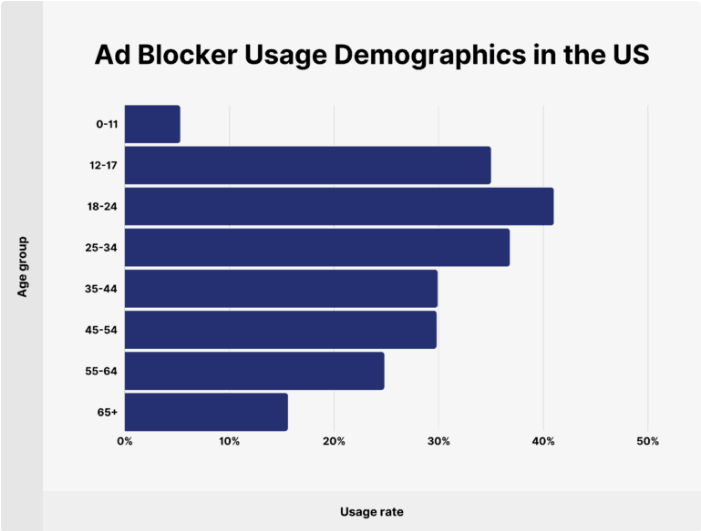
Image sourced from backlinko.com
Using an ad-free SVOD, TVOD, or hybrid solution will ultimately give paying viewers a smoother and more satisfying viewing experience.
This, in turn, will make them appreciate your valuable content more, which will ultimately bring them closer to your brand and encourage greater loyalty.
Is a video paywall right for my business?
Despite the many benefits, this approach doesn’t suit all businesses.
If you mainly use video for marketing, paywalls may not be an ideal solution as you want your marketing content to be seen as far and as wide as possible.
However, if you use video to add value for customers and viewers (for example, to entertain or educate), then a paywall platform could bring real benefits.
If you use a mix of marketing videos and more exclusive video content, a hybrid system with a soft paywall or a freemium offering could be best. This allows you to get great reach with your free and promotional material while still capturing those all-important paying customers where it matters.
If you’re not sure whether or not a paywall could be good for your business, the best way to find out would be to do some customer research. Use everything from your sales prospecting tools to analytics on your current content to find out what your customers (current, past, and potential) find most valuable. Additionally, consider whether they would be likely to appreciate paid access to more exclusive, tailored content.
3 ways to use paywalls to capture better data and boost conversions
Once you’ve chosen your paywall model, start bringing in viewers. This can be more challenging than it is with free platforms, but it’s worth the effort if you can get it right.
-
Attract viewers with lead magnets
Lead magnets are especially useful to persuade people to purchase, especially if you are using an SVOD format.
What is a lead magnet? A lead magnet is something that grabs the attention of potential customers, giving them an enticing taste of your product or services and encouraging them to buy. Free samples and new-member discounts are common examples of lead magnets.
In a video subscription context, good lead magnets include:
-
Free, exclusive content
-
Merch discounts
-
Interactive games and quizzes
-
Webinars
- Highly personalized content
In the example below, the lead magnets for app subscription are the free trials. The app piles on the persuasion with enticing promises of the benefits the customer will experience if they subscribe and the ease with which they can cancel if it’s not working for them.
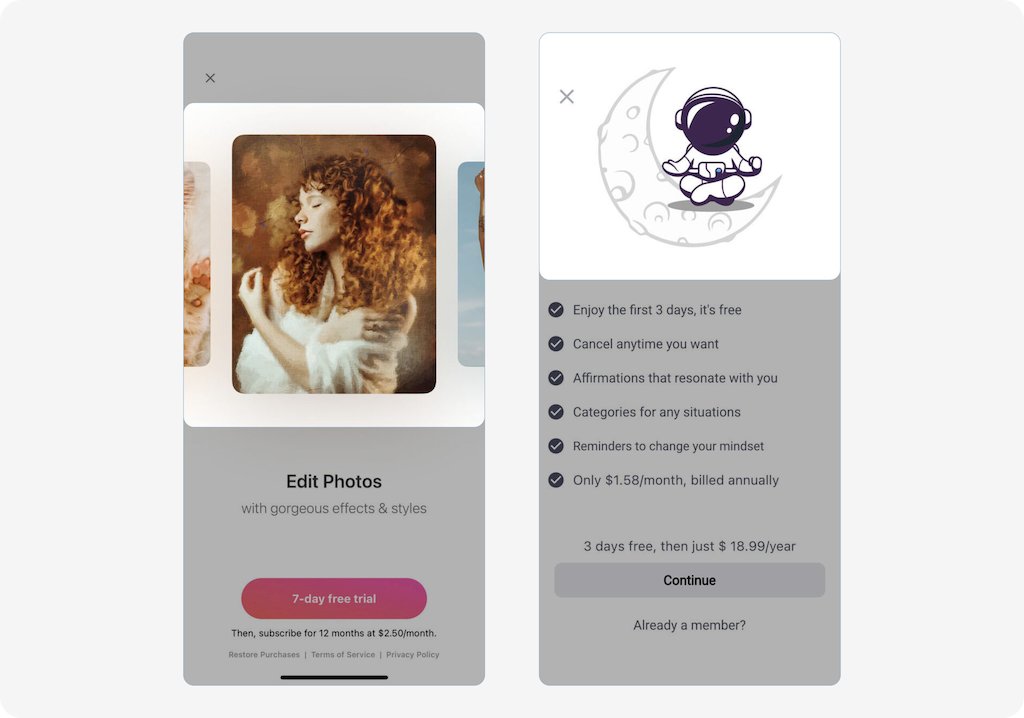
Image sourced from apphud.com
The best kind of lead magnet depends on the wants and needs of your audience. So, dig into your customer data to determine what will appeal to them and help you increase conversions.
-
Implement a solid data-capture process
As we’ve mentioned, data capture from paywall forms can contribute to incredibly valuable customer insights. But to get those insights, you need to gather the data properly.
When designing capture forms, think about what customers will and won’t be comfortable disclosing. Don’t make every field compulsory and don’t penalize customers for not filling in fields that may be sensitive for them.
For an easier access to detailed information or additional resources, consider providing a QR code for PDF downloads on the capture forms.
Remember, it’s not all about data from the paywall itself. If you use a solution like Cincopa, you can get detailed data on your viewers and their viewing habits as they watch your content.

Image sourced from cincopa.com
Make sure the viewer has full control of their data and understands what it will be used for. This isn’t just courtesy; it’s also the law in many parts of the world.
CCPA and other data protection laws in the USA, GDPR in Europe and the UK, and similar legislation all around the world impose harsh penalties for collecting data without consent and/or using it in ways the customer hasn’t authorized.
It can help to create a preference center like Netflix where subscribers can tell you what they’re comfortable with in terms of data usage and marketing. You can also use your preference center to gauge customer interests. Ask them what kind of content they’d like to see more of, what format they’d like it in, and what they can live without.
3. Use data to tailor your content
People must sign up to get past your paywall. So you’ll quickly find yourself with a lot of very useful data, including:
- Average age of your viewers
- Geographical location
- Job titles/industries
- Other demographic information, such as gender
By employing generative AI, you can automate and refine the creation of video content to match these demographics, ensuring each viewer receives a highly personalized experience.
If, as mentioned above, you’ve created a preference center, you can also glean useful information on the kind of content they want to see, preferred topics, and video lengths.
Cross-reference this data with viewing and engagement figures on your content. Then, you can use all the information about your customers, what they want, what they watch, who they are, and so on, to tailor your content to their needs.
This shouldn’t just be about topics and video styling, either. For example, you can also use location and job data to figure out the best times to post videos for maximum engagement. So, if you have a lot of subscribers in NYC that work 9-5, it makes sense to post during non-work hours.
Use video paywalls to capture vital customer data and improve conversions
Video paywalls are an effective way to boost conversions and improve customer loyalty. But it’s important that you pick the right paywall model, provide engaging content, and comply with data regulations.
Whether you’re making instructional videos, training courses, or amusing skits, leveraging this approach will show potential customers that you have something valuable to offer. Sharing high-quality, exclusive content that gives you a reliable alternative revenue stream enables you to create more great content, leading to long-term growth.







